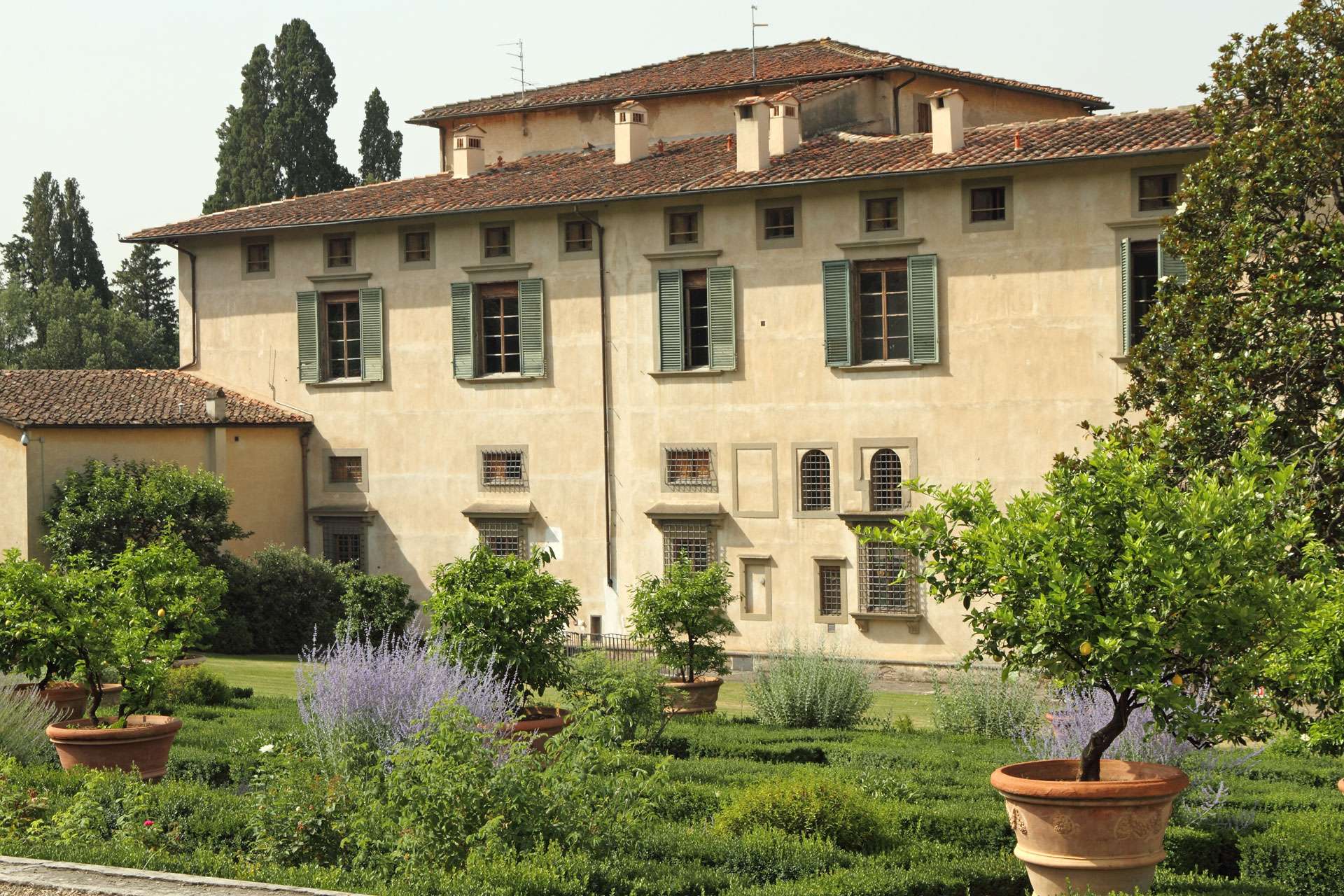Like every self-respecting Renaissance bigwig, Florence’s Medici family kept a place or two in the country. Being the Medici, however, they had to have more and grander villas than anyone else — and over the centuries, they built several, mostly north and west of the city.
Now known collectively as the “Medici villas and gardens”, they were recognised in 2013 by UNESCO as part of Italy’s unique cultural heritage. Many are also visitable, some have museums inside, and almost all are comfortably within range of our villas near Florence.
In the beginning…
The story of the Medici villas begins north of Florence in the Mugello, at the Villa di Cafaggiolo. The family’s roots lay in the area, and later this is where they would return and lie low when things got sticky in Florence. As a result, Cafaggiolo looks more like a castle than a villa, with fortifications and a defensive tower in the medieval style — courtesy of a refit completed in the 1450s for Cosimo de’Medici (aka “Cosimo il Vecchio”).
Like Cafaggiolo, close-by Villa del Trebbio was an early acquisition which Giovanni di Bicci de’Medici (Cosimo’s dad) commissioned architect Michelozzo to reshape. Michelozzo also redesigned the Villa di Careggi, with trademark medieval-style parapet, also adding an elevated loggia for his patrons to enjoy the countryside views.
Careggi was Lorenzo the Magnificent’s favourite villa. It was where he held meetings of his “Neoplatonic Academy”, with the Florentine Renaissance’s leading writers, sculptors and painters. He died at Careggi in 1492.
Monarchs and murder
Lorenzo also commissioned the architectural pinnacle of the Medici villas: the Villa di Poggio a Caiano. Star architect Giuliano da Sangallo got to work on its overall design, with arcades and an elaborate portico, in the 1480s. Lorenzo never lived to see it finished: his son Giovanni, who later became Pope Leo X, oversaw its completion around 30 years later.
Layer upon layer of Medici and Italian history survives at Poggio a Caiano, including a little theatre from the 1600s (Cosimo III was a fan) and billiards tables installed when this became a royal residence for Vittorio Emanuele II, the first king of a united Italy in the 1860s.
The interior has tapestries by Alessandro Allori, paintings by Vasari and Veronese, and a restored frieze commissioned by Lorenzo for the villa’s facade (where it remained until the 1960s). The Great Hall, whose decor was completed for Leo X, has allegorical frescoes by leading Florentine Mannerist painters, Andrea Del Sarto and Pontormo.
There’s also a hanging staircase in pietra serena stone, supposedly designed by Vasari to connect the rooms of Grand Duke Francesco I and his lover (later, second wife), Bianca Cappello. The pair died of arsenic poisoning within 24 hours of each other, in October 1587. (Before you feel sorry for him, Francesco also approved, maybe even organized, his own sister’s murder at Cerreto Guidi; read on...)
A decade ago, the villa’s top floor was converted into a Museum of Still Lifes. The later Medici were avid collectors of still life painting — “Natura Morta” (“dead nature”) in Italian. Their unique collection includes vases and flowers, of course; there’s also a charming Flemish “Supper at Emmaus” viewed from the perspective of the kitchen staff. A room full of pictures of lemons was painted faithfully by Bartolomeo Bimbi (1715), as well as monumental panels depicting all varieties of native Tuscan fruit, indicating the months they ripen.
Grand designs and grander gardens
The Medici’s villa building boom did not die with Lorenzo and his Golden Age. These later villas date to the period when the family were “officially” elevated to the ruling class; when Tuscany became a dukedom and Cosimo I (descended from Cosimo il Vecchio’s younger brother, Lorenzo) became its first Grand Duke.
Grand Duke Cosimo loved to hunt and commissioned the Villa Medicea di Cerreto Guidi, near Empoli, as his grand private hunting lodge. From the forecourt, he could survey his lands stretching for miles in every direction. This territory, which includes the Fucecchio Marshes, was abundant in game.
The design of monumental ramps leading up to the front door are attributed to Bernardo Buontalenti, who did lots of work for Cosimo in Florence. The villa now houses a museum dedicated to hunting (an upper floor has the weapons collection). There’s also several family portraits, including two Medici popes (Leo X and Clement VII) facing each other across an upstairs room.
This Medici villa also has a notorious past. In 1576 Cosimo’s daughter, Isabella, was murdered by her husband, Paolo Giordano Orsini — probably with the complicity of her brother, Grand Duke Francesco I. Somewhat hypocritically, male members of the family were unhappy with rumours of Isabella’s infidelity.
Cosimo I was an enthusiast for garden design. He commissioned Niccolò Tribolo to create the magnificent garden at the Villa di Castello, where Cosimo spent his childhood. (His villa remains closed to visitors.) Later, Tribolo also completed Florence’s Boboli Garden for Cosimo’s wife, Eleonora of Toledo. His son, Ferdinand I, renovated the Villa di Petraia, also with formal gardens and views over Florence.
Even if you’re staying in a luxury villa in Tuscany with private pool, tear yourself away for a day to see a slice of Medici and Tuscan history often missed by visitors.
